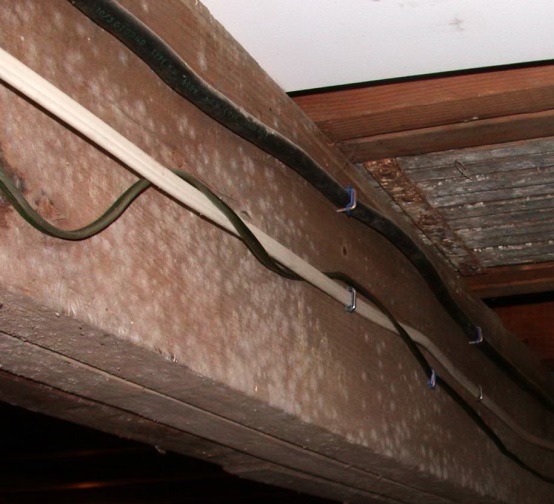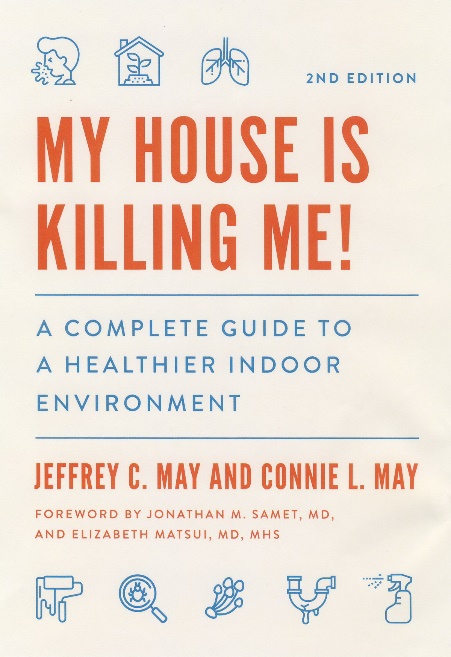IAQ IQ: Fall, 2020
©2020 Jeffrey C. May
The air in any home can become polluted with allergens, irritants and other contaminants, but apartments and condominiums in a multi-unit building can develop their own particular air-quality problems. If you are hired to inspect a condominium in a multi-unit building and your client has allergies or asthma, consider inspecting or commenting on the following:
Heating/cooling: If the unit has baseboard convectors (with fin tubing), there should be no dust on the fins.
If the unit has univents, be sure that your client understands that the units must be serviced on the recommended schedule. The units should also have pleated-media filters that are airtight at the perimeter so that no air can bypass the filter. There should not be any visible dust at the interior of the univent. If the condominium has vertical stack units (such as Whalen-like heat pumps or fan coils), be sure to recommend further inspection, as these types of units are often very moldy.
Inheriting appliances, furniture and carpeting: It’s not a good idea for your allergic client to keep the Seller’s refrigerator without hiring someone to clean out the drip tray (which can be moldy) and coils (which collect allergenic dust). Whenever the refrigerator turns on, by-products of microbial growth and other allergens can be aerosolized. It may feel convenient to inherit furniture, but the furniture may contain mold growth or pet allergens, especially if the pieces are upholstered/cushioned or have ever been stored in a damp space. Carpeting can also contain mold growth, pet-dander particles, and other allergens.
Common areas:
Hallways: Your client may not think about the hallway outside the condo, but air from a common hallway can flow into a condominium, especially if there is a space beneath the entry door to the unit. (In fact, many high-rise residential HVAC systems are designed with fresh air being pumped into the hallways and with continuous exhausts in the apartments, so fresh air will be drawn from the hallways into the units.) In addition, to get to a unit in a multi-unit building, a person has to walk down a common hallway.
If the hallway is carpeted, notice whether the carpet has any stains or appears to be old and worn, because then the carpet could be a source of airborne allergens and contaminants and might need to be tested by an indoor air quality professional. And any moisture staining on walls or the ceiling in a common hallway should be noted.
The Basement: We’ve received a number of complaints from people who live in both smaller and larger multi-unit condominium buildings. Their Association is all in favor of taking good care of the common hallways and the exterior, including the landscaping, but what about the basement?

In principal you should always inspect a basement in a multi-unit building, because air in a building flows from bottom to top and out due to the “stack effect.” That means that your client may well be inhaling basement air when in other parts of the building. If there is private storage space in the basement that is attached to the condominium you are inspecting, then inspecting the basement is a must – for all the usual reasons that you include a basement in a home inspection of any property. And the sources of many indoor-air-quality problems are below grade. If the basement in the building smells musty or you see possible mold growth, recommend further evaluation.
Some species of mold can grow when the relative humidity (RH) is over 80%. As air cools, it’s RH rises. Below-grade are naturally cool and damp, so in the humid season, the RH must be kept under 50% in a crawl space or unfinished basement and 60% in a finished basement.
The garage: In a larger building with an underground garage, combustion products and soot particles can travel on air flows up elevator shafts. Soot particles can blacken walls and carpets ten floors up; in addition, soot particles are unhealthy to inhale. In such a building, the elevator should not open up directly into the garage, but rather be located in a vestibule with an airtight door. Otherwise, as the elevator rises and falls it will spread air from the garage into other levels of the building.
The Flow of Air
We get one or two calls a month from people who are smelling smoke and cooking odors from their neighbors’ apartments. This is a tough problem to address. Your client can try to close cracks and gaps through which air may flow into the condominium from the common hallway or from a unit below the condo you are inspecting. But air will move from higher pressure to lower pressure, and warmer air will rise while cooler air will sink. So as far as airflows are concerned, walls are an inconvenience but not altogether an impediment. If your client has allergies or asthma or is sensitive to cigarette (or these days, marijuana) smoke or fragrances, it’s best to express caution about the purchase if such odors are present.
People in Charge
Before signing on the dotted line to purchase a condominium, your client should find out the schedule for maintenance and capital work, even if the building is small – say, 8 units or less. If possible, your client could meet some of the residents, Board members, and/or maintenance or management staff.
Some Tips to Give Your Client
- Clean the baseboard heating convectors, if present, as they can contain allergenic dust that has been there for years. Remove the covers, clean them, and place them on the floor under the fins. HEPA vacuum the tops, bottoms and sides of the fins. Put rags on the covers and then blast the fins with steam vapor from a steam-vapor machine. (There are some companies that will do this kind of deep-cleaning work.) Once the convectors have been cleaned in this way, your client only needs to wipe the tops of the covers at the start of every heating season.
- Radiators should also be cleaned prior to occupancy as they, too, can contain allergenic dust. A 36-inch vacuum crevice tool (available on-line) can be used to get to hard-to-reach spots. Radiator covers if present should also be cleaned. Radiators should be cleaned in this way before the start of every heating season. If the radiators are steam, they could be disconnected, taken to the exterior, and hosed down.
- If the apartment has carpeting, your client could lay carpet protector on the carpet “pathways” to minimize the aerosolization of dust due to foot traffic. This is a good diagnostic experiment to see if the air in the unit feels cleaner when the carpets are covered this way. Your client may want to consider replacing the carpeting with hard flooring.
Final Words
In a multi-unit building, the air someone inhales in common areas or even in a condominium can be flowing from other parts of the building. If your client has allergies, asthma or other environmental sensitivities, you may want to encourage the person to consider living in a single family, if possible.

Our new book My House is Killing Me! A Complete Guide to a Healthier Indoor Environment (Edition 2) will be available in December (published by Johns Hopkins University Press and available on-line).
